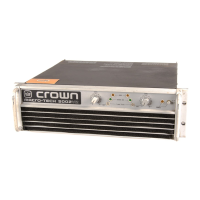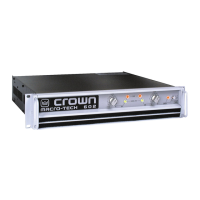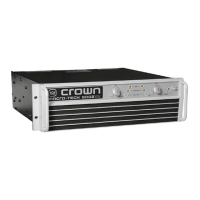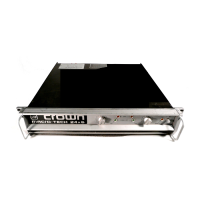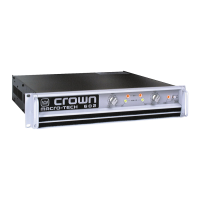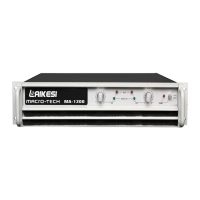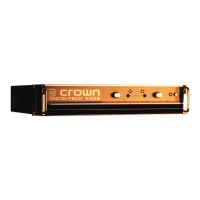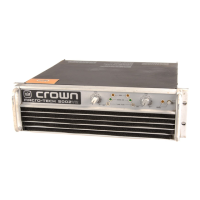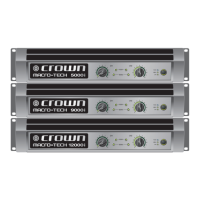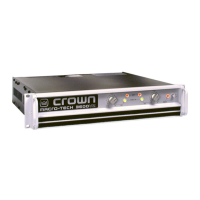Notes
level
has
dropped
sufficiently.
Capacitors
¡n the
U705
circuitry
control
the
speed
of the
down-shift.
In
the
Bi-ODEP
mode,
the
switch
opérales
as it
would
¡n
AUTO mode unless
ODER
ümiting
is ¡n
progress. When
ODER
limiting
occurs optic coupler U704 shorts
a
negative potential
(-
VCC)
to the 555
reset control
to
turn
the
MOSFET
switches
off
and
keep
them
off
(low
voltage/high
current
mode)
until
the
ODER
limiting
condition clears.
Upstream
of the
toroids
are the
soft-start
and
protection mechanisms
used
to
power down
the
amplifier.
See
Protection Systems.
The low
voltage power supply utilizes
a
sepárate transformer.
The
front
panel power switch
and a 1A
fuse
(F702)
are the
only
components
upstream
of
this transformer.
The
output
of the
transformer produces
±24VDC unregulated.
U715
and
U716
produce regulated ±15VDC
respectively.
A
sepárate
fullwaverectifier
produces
pulsedDC
for
Over-
voltage sense
and
Soft-start control.
ODEPTHEORY:
MA-5000VZ
To
protect
the
output stages
from
adverse thermal
conditions,
a
specially developed
"ODER"
(Output Device Emulation Protection)
circuit
is
used.
It
produces
a
complex analog output
signal
proportional
to the
always changing safe operating
área
(SOA) margin
of the
output
transistors. This output
signal
controls
the
Voltage
Translatorstage
and
Low
Side output stage
bias.
This action removes only
the
drive
that
may
exceed
the
safe-operating-area
of the
output stage.
Thermal sensors give
the
ODER
circuitry vital
Information
on the
operating temperature
of the
heat
sinks
on
which
the
output devices
are
mounted. This temperature signal combines
with
the
complex
ODER
signal
to
form
the
heart
óf the
patented
ODER
protection scheme.
Refer
to
block
diagram
on the
next
page
for a
discussion
of the
basic operation
of
the
ODER
system.
The
ODER
circuitry actually comes
in two
parts,
one
positive
and the
other negative.
For the
purposes
of
discussion,
only channel
1
ODER
circuitry
is
covered here,
and
focus
will
primarily
be on the
positive
half.
An
LM-334Z thermal sensor provides
a
calibrated output
from
the
output
modules.
At
25°C
its
output
¡s
2.98V,
with
a
10mV
increase
per
every
1°C
rise
in
heatsink temperature.
This thermal sensor
output,
from
the
positive sensor, goes
to
three
destinations. First
¡s a
buffer
which drives
the
caübrated
temperature
test
point
at pin 7 of
TP1/TP2.
Second
¡s an
over-temperature
limit
trip.
This will cause both
the
positive
and the
negative
ODER
circuit
to go
into
and
remain
in
hard
ODER
until
the
heatsinks
cool.
Third,
it
goes down
into
a
circuit which combines thermal
and
output power information
for
proportionalfan
control and, when needed,
limiting.
The
thermal sensor
from
the
negative output module only
performs
this
lastfunction.
A
pair
of
sense
unes
from
the Low
Side emitter resistors provide current
information. Combined with
VCC
information actual instantaneous
power
is
calculated.
A
combining circuit determines
the net
thermal
12-MA-5000VZ
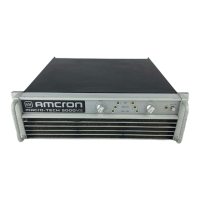
